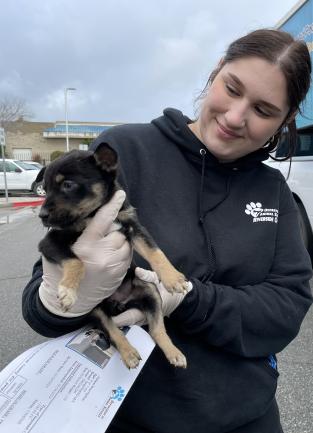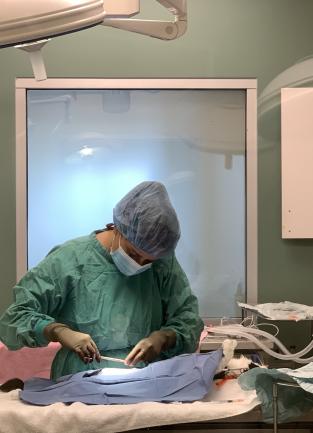The following information is provided to our county residents as an FYI. The information is from the California Department of Food and Agriculture.
The California Department of Food and Agriculture (CDFA) reported (on Mon 13 Feb 2017) that a horse from San Diego County, which was previously stabled at the HITS show grounds, in Thermal, California, tested positive for equine herpesvirus-1 (EHV-1).
A 10-year-old Warmblood gelding in San Diego County displaying neurologic signs of urine dribbling and hind-limb ataxia (incoordination) was confirmed positive for equine herpesvirus-1 by the California Animal Health and Food Safety Laboratory, the state's regulatory laboratory," the department said in a statement. "Based on the clinical signs and positive laboratory test, this horse meets the case definition for equine herpesvirus myeloencephalopathy (EHM), a condition which requires regulatory action.”
“The neurologic signs were first noted (on Tue 7 Feb 2017]," the statement said. "The positive horse was stabled in Tent 21 at the HITS Show in Thermal, California, from [21 Jan to 5 Feb 2017]. The EHM horse and 1 additional exposed horse have been quarantined at their home premises in San Diego County. (The) CDFA has been in contact with HITS show management and veterinarians to ensure enhanced biosecurity measures are taken on the premises, including cleaning and disinfecting the stabling area.”
The CDFA recommended any exposed or potentially exposed horses be observed for clinical signs and have temperatures taken twice daily.
Herpesvirus is highly contagious among horses and can cause a variety of ailments in equids, including rhinopneumonitis (a respiratory disease usually found in young horses), abortion in broodmares, and myeloencephalopathy (the neurologic form). In many horses, fever is the only sign of EHV-1 infection, which can go undetected.
In addition to fever, other common signs of EHV-1 infection in young horses include cough, decreased appetite, depression, and a nasal discharge. Pregnant mares typically show no signs of infection before they abort, and abortions usually occur late in gestation (around 8 months), but can be earlier. Abortions can occur anywhere from 2 weeks to several months following infection with EHV-1.
Horses with the neurologic form usually have a fever at the onset of the disease and might show signs of a respiratory infection. A few days later, neurologic signs such as ataxia (incoordination), weakness or paralysis of the fore- and hind limbs, urine retention and dribbling, loss of tail tone, and recumbency (inability to rise) develop.






